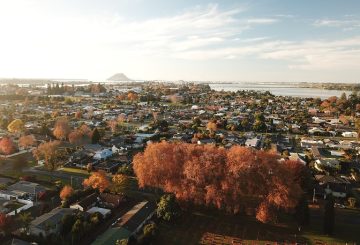Ученый-климатолог доктор Олаф Моргенштерн
.
В этом году NIWA (Национальный институт водных и атмосферных исследований) прогнозирует раннее и продолжительное образование озоновой дыры в атмосфере.
Ведущий специалист по изучению атмосферы и климата доктор Олаф Моргенштерн выразил предположение, что озоновый сезон затянется дольше обычного из-за сочетания изменения климата и прошлогоднего извержения вулкана в Тонге.
«В стратосфере наблюдается тенденция к охлаждению, в результате чего озоновая дыра распадается на более позднем этапе своего сезонного цикла и прослужит чуть дольше, чем в противном случае.
Озоновая дыра в Антарктике обычно достигает наибольших размеров в сентябре или октябре и исчезает в ноябре или декабре.
Молекулы озона поглощают ультрафиолетовое излучение солнца, действуя как солнцезащитный крем для жизни на Земле.
По словам Моргенштерна, хаапай Хунга-Тонга-Хунга выбросил в атмосферу невероятное количество водяного пара, что привело к охлаждению стратосферы и усилению истощения озона, образовав облака над Антарктидой.
По его словам, стратосфера очень чувствительна к изменениям температуры, а изменение климата вызывает долгосрочную тенденцию к охлаждению, что может способствовать сохранению холодных и стабильных условий, наблюдаемых в настоящее время.
По его словам, истощение озонового слоя в Новой Зеландии произойдет в период с декабря по январь, что совпало с наступлением наивысшей точки солнца на горизонте.
По словам Моргенштерна, дыра в озоновом слое, скорее всего, начнет исчезать в середине 2060 года.
Источник: radionz.co.nz




























































